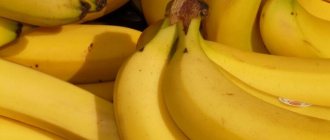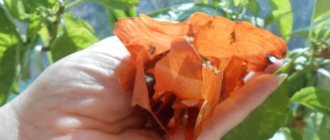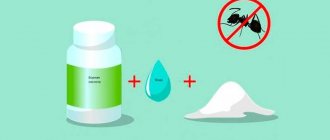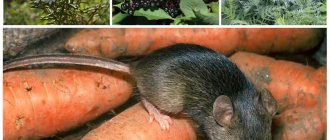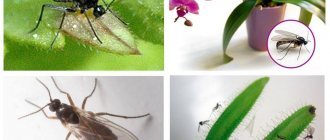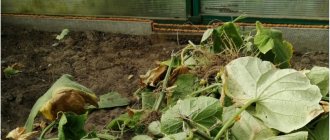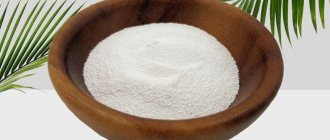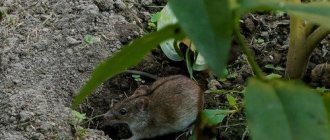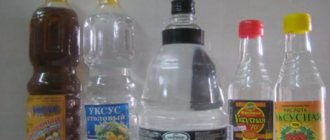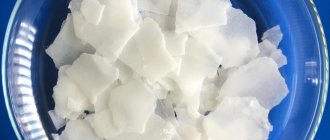As a fertilizer for garden plants, you can use not only industrially synthesized mineral preparations, or organic matter such as droppings or manure.
There are many ways to feed vegetables using available materials. Dear readers!
For you, we have created communities on social networks in which useful articles and interesting ideas are published several times a day! Subscribe and receive useful content in a convenient format! For example, ordinary onion peels can be a source of nutrition and useful microelements. Today we will look at how to use it for feeding, how to prepare it correctly and what nuances to pay attention to.
For which plants can onion peels be used?
Onion peelings are used as an environmentally friendly organic fertilizer for almost all vegetable, garden and flower crops, including indoor flowers.
The product in dry form and as part of a liquid solution increases the immunity of plants, their resistance to the effects of adverse environmental factors, has an anti-inflammatory effect, strengthens and stimulates the development of roots.
Most of all, potatoes, tomatoes, zucchini, peppers, eggplants, pumpkins and cucumbers like onion dressing. Regular feeding with husks has a positive effect on their productivity.
Strawberries and berry bushes also respond well to treatment with this product.
What useful elements does it contain?
Of course, onion peels are not among the top 3 most important fertilizers for plants. However, it contains useful vitamins (A, B, C, E, PP). In addition, it is a source of phytoncides, beneficial mineral salts and organic acids. The husk contains small doses of trace elements (for example, phosphorus, copper, magnesium). The peels also contain rutin and quercetin, which are needed to increase the sweetness of fruits, and carotenoids that protect against pathogenic fungi.
All this makes onion peel a useful fertilizer. A kind of vitamin complex for plants, an important dietary supplement that strengthens the health and immunity of vegetables, berries and fruit crops.
Composition and beneficial properties
Onion peels contain many valuable mineral and biologically active substances that nourish plants, promote their quality development, and protect them from pests and diseases. Before using onion peels for your garden, study its main organic elements:
- phytoncides - concentrated on the surface scales of onions, protect the plant from damage by harmful bacteria and fungi.
- carotene - considered the life-giving force of plants, the largest amount is found in carrots, but there is also plenty of it in onions. The substance helps to grow high-quality seedlings and increase crop resistance to various diseases. Carotene is especially recommended for places with poor ecology and high gas pollution. Remember that the substance destroys harmful microorganisms (especially rot and fungus) and is a natural immunostimulant that suppresses the formation of free radicals.
- B vitamins - the more of them, the more valuable the product is considered. Very useful infusions are obtained from the husks, rich in these vitamins. It is recommended to water young seedlings with nutritional complexes: this helps stimulate growth, strengthen the leaves and stems of plants, and prevent the occurrence of root rot.
- nicotinic acid (vitamins of the PP group) is a necessary component for the high-quality processing of nitrogen and sulfur. The overall development of culture depends on the presence of this substance. Nicotinic acid helps the necessary oxidative reactions occur in living cells and improve the process of root formation, which is very important when keeping plants in heavy soil.
How to use husks as fertilizer
As mentioned above, onion scales are a source of vitamins and beneficial microelements. Usually a liquid fertilizer is prepared based on the product. The solution is applied at the root of the plant on pre-moistened soil. This fertilizer can be used throughout the entire growing season of crops: from growing seedlings to flowering and harvesting.
When preparing the soil, you can also add dry husks. But there is a limitation - no more than 3 liters of product per square meter of future plantings. The fact is that excess peeling will affect the taste of the fruit. Cleanings are scattered before digging or plowing the area. This can be done both in spring and autumn. In the ground, they retain their beneficial cleaning properties for six months. This time is more than enough to grow annual vegetable and berry crops.
ON A NOTE. Dry cleaning can also be used as mulch. But be sure to dry the husks and discard those that begin to rot.
Fertilizer for house flowers
Caring for plants at home requires even more time and money than growing in the garden. After all, the conditions at home for flowering or decorative deciduous species are not ideal.
It is too dry from the radiators, there is often not enough light - if the windows face north or east. Or there is too much light - if the windows face south. But most exotic plants come from humid jungles, so the conditions for keeping them must be brought closer to natural ones.
Oddly enough, onion peels will help create such conditions. The jungle soil, strewn with dead leaves, branches and fruits, is similar in composition to that which is formed after adding onion peels to it! The same flavonoids, substances formed during decomposition and fermentation, the same tanning properties of mulch.
When feeding indoor crops, you cannot use onion decoctions or infusions for succulents, ficuses and fat plants: instead of developing, they may die. The extracts released from onion peels are completely uncharacteristic of the sands or rocky wastelands of deserts, semi-deserts and dry savannas where these plants live!
To prepare an infusion for the purpose of feeding indoor plants, a multi-layered husk from two large onions of a dark, golden brown color is sufficient. If the color of the husk is light, it is taken from 3-4 onions.
The husk is poured with a liter of boiling water, left for 3-4 days, and plants with signs of wilting or those that have stopped growing are watered first. Usually after 2-3 weeks the plants come to life, begin to grow, and new shoots or buds appear on them.
This infusion is used as a top dressing no more than once every 3-4 weeks - the concentration of nutrients in it is such that the soil can be “overfed”, and the roots of the plants will get burned.
How to use onion skins for processing
If you reduce the concentration of the infusion by adding more liquid to it, then the onion broth can also be used to spray plants. But in this case, the treatment is carried out either in the morning or in the evening.
Please note that the spray liquid must be warm. There is no need to spray frequently. For the entire season, a maximum of 3 treatments is sufficient.
Foliar treatment can be carried out when the first signs of infection with fungal and bacterial infections appear, as well as when pests appear. But there is an important nuance. In case of severe infection, this remedy will not help. Therefore, it is better to immediately use more effective fungicides and insecticides. Use a decoction of onion peels as a disease prevention.
ON A NOTE. The cooled broth can be used for preventive spraying against a whole group of pests. For example, whitefish, aphids, spider mites, slugs, etc. cannot stand the smell of onions.
We fight pests - how to do it correctly, in what proportions and dosages
Onion peels have a repellent effect against pests. This allows the use of products based on it for prevention and at the initial stage of damage. Timely application helps minimize damage, promotes rapid recovery and prevents the massive spread of pests.
Spider mite
The lesion can be identified by yellow small dots along the edges of the leaves, a dejected general appearance and a thin cobweb that envelops the tops of young shoots.
This pest feeds on cell sap, which weakens the plant and leads to slower development. To combat spider mites, you need to spray the crops with a decoction 2-4 times every 1 week.
Method for preparing an effective remedy:
- Pour boiling water over the husks in a ratio of 1 to 2.
- Let the infusion stand for two days, stirring it occasionally.
- Strain thoroughly before use.
- Add water - 1 to 1 to the resulting concentrate.
- Additionally, rub 50 g of laundry soap into the mixture.
- Stir until a homogeneous mixture is obtained.
Aphid
The pest forms a whole colony. Insects feed on the sap of young shoots and leaves, which leads to their deformation. And if measures are not taken in a timely manner, you may be left without a harvest at all. An infusion of onion peels helps against pests. The product should be applied once for spraying when the first signs of aphids appear.
Recipe:
- Add 200 g of husk to an 8-10 liter bucket of warm water.
- Stir the mixture and cover with a lid.
- Leave for 24 hours in a warm place.
- After time, strain.
- Then add 50 ml of dishwashing liquid (required as adhesive).
- Mix and use as directed.
Garden ants
You can also get rid of ants using onion peels. In this case, infusion helps solve the problem. It should be used to spray places where insects and anthills move. Carry out the procedure daily until signs of ants in the area are completely eliminated. The product has a contact effect, the protection lasts until the first rain.
Method for preparing an effective solution:
- Place 200 g of peelings in a bucket.
- Then pour in 1 liter of warm water.
- Leave the mixture for a day, stirring occasionally.
- After the time has passed, clean the product by straining.
- Bring the total volume of liquid to 10 liters.
Read: The best ways to get rid of ants in the garden
Using onion peels for seedlings
Water the seedlings well with infusion of onion peelings. This increases its resistance to disease. Watering with such a solution will prevent the development of bacteriosis, rot and blackleg. Processing can be carried out several times.
The recipe is as follows: pour 1 cup of husk with 2 cups of boiling water and leave to steep for at least 12 (preferably 24) hours.
Then the solution is filtered, mixed with clean water 1 to 3 and used for irrigation. But be careful, the soil under the seedlings must first be moistened, at least with a spray bottle.
How to use for indoor plants
An infusion of purifications can be used to revive indoor plants. If some of your home flowers dry out and turn yellow, then it is better to save them with the help of onion decoction. The frequency of feeding is 2 times a month. If the leaves are just starting to turn yellow, spray them.
The recipe for preparing the working solution is as follows: pour a handful of husks into a pan, add water and cook for 5-7 minutes. Then cool, strain and process the flowers.
ON A NOTE. The same decoction can be used to water the soil before replanting home flowers. The product will disinfect the soil without changing its structure.
Protection
Aqueous extracts of onion peels cope with many diseases and pests in the garden. They protect plantings from the following insects:
- aphids;
- thrips;
- meadow bugs;
- spider mites;
- cutworm caterpillars;
- apple suckers;
- codling moths;
- cruciferous flea beetle;
- beet aphid;
- carrot fly larvae;
- common earwigs.
A 200 gram glass is tightly filled with husks, poured into a bucket of water, boiled, left for a day, filtered and processed vegetables. This is the prevention of fungal diseases and at the same time feeding.
Important! Plants are sprayed every 5 days.
If you need to get rid of pests, then make a steeper solution. The volume of raw materials is taken 4 times more: 800 grams per 2 liters. Boil over low heat for 10 minutes, filter, leave for a day and dilute with an additional 2 liters of clean water.
Important! A few drops of liquid soap are added to the decoction for better adhesion to the leaves.
Storing apples, carrots, celery, and beets in onion scales in the cellar gives excellent results. There is practically no waste. That is, vegetables do not rot or disappear. The smell of onions is not transmitted to apples.
How to prepare a decoction of onion peels
Now let's look at some popular recipes for decoctions and infusions of onion peels.
"Classic" solution
Pour a handful of onion peels into 5 liters of liquid, bring to a boil and keep in this state for 5 minutes. Leave for 5 hours, then use for watering vegetable crops.
From pests
Boil a third of a glass of onion peelings in 3 liters of water for just a few minutes. After this, the liquid is cooled and infused over the next 12 hours. After which the solution is filtered and poured into a sprayer or spray bottle. Suitable for preventive treatment against parasites. Recommended frequency is once every 4 days.
Bactericidal solution
For preventive purposes to prevent diseases caused by pathogenic microflora, this recipe is used. Half a glass of husk is poured with 5 liters of just boiled water. Mix everything thoroughly, cover with a lid and leave to cool. After this, water the soil under the plants or spray with a fine spray.
Special decoction for tomatoes
Tomato seedlings love this decoction: a glass of boiling water per glass of peel. The mixture is infused for 48 hours. Then it is filtered and diluted with water 1 to 3. You can water it after planting the seedlings, as well as during flowering.
Concentrated
Pour a glass of husk with 2 glasses of hot water. Boil and leave to brew under a closed lid for 2 days.
Cold infusion
It is considered the most useful, as it fully reveals all the beneficial properties of onion peelings. It is prepared as follows: two tablespoons of husk are poured with a liter of boiled water at room temperature. For infusion, it is advisable to use an opaque container, but you can simply place the jar in a dark place. Infusion time – 1 day.
For trees
Pour 200 grams of scales into a bucket of water, cover with a lid and place in a dark, dry place for 4 days. Mix the solution once a day. After 4 days, drain the liquid and pour it into the sprayer. Carry out the treatment in dry, windless weather in the morning or evening.
Tillage
In spring, the soil in the greenhouse and greenhouse needs to be disinfected. To do this, you can use an infusion or decoction of onion skin. Two liters of concentrate are diluted in a bucket and watered over the entire surface - 3 liters per 1 sq.m. After this, you should not irrigate the beds with onion broth during the season. Otherwise, cucumbers may acquire a bitter taste.
Important! The infusion kills harmful microflora in the soil and enriches it with microelements.
If the husk is introduced into the hole in the spring as top dressing, it is wetted so that it does not fly away when the wind blows.
In the fall, the soil is usually dug up before winter. To fertilize the soil, make it looser and more nutritious, onion peels are simply added to the ground. In addition, quarcetin from the shell, once in the soil, successfully fights fungal spores.
Reviews from gardeners who are not lazy to collect the husks and use them in their beds are the most positive.
Advantages and disadvantages
First, we list all the advantages of such feeding:
- Availability. You can collect the husks yourself throughout the year.
- Safety. It is very difficult to dilute the product so that the plants overdose.
- Environmental friendliness. Onion scales are organic; they decompose well and do not accumulate in the soil.
Now a few words about the shortcomings:
- This is not a complete fertilizer. If you have poor soil or plants often become victims of parasites, then use more effective mineral fertilizers, insecticides and fungicides together with onion peels.
- The solution is suitable for one treatment only. The prepared solution is not stored.
- Useless when severely affected by diseases and pests.
Precautions for use
It is very difficult to harm plants with onion skins. However, we list some points that you need to pay attention to.
- The decoction is applied immediately. The finished product is not stored, as it loses all its beneficial properties.
- There is no need to add too much husk to the hole when planting. This can cause the fruit to become bitter. This is especially true for cucumbers.
- Although onion peels are safe, it is better to apply the solution on moist soil.
Application against plant diseases and pests
This is an effective nutritional and protective product for the cottage and garden. How to use onion peels in the garden against diseases:
- Viral and fungal infections (root rot, stem rot, leaf spot, black leg, etc.).
- To prevent diseases, it is recommended to spray vegetable crops during the return of frost (early May). The procedure is carried out in the early morning or on a cloudy day. Aggressive sun rays will leave burns on the seedlings.
- To restore seedlings and seedlings after infections, it is recommended to irrigate the aerial parts and trunk circle with onion infusion.
- In case of chlorosis, breathing problems, photosynthesis, or the development of pathological processes, garden crops will be supported by “onion nectar”. For example, seedlings growing in the shade grow poorly and do not form an ovary. The reason is metabolic disturbances and delayed photosynthesis. Spraying the green mass will support young shoots in growth and development during the growing season.
Common mistakes
- Using a hot mixture. The solution must be cooled and infused. The hot liquid will “scald” the leaves and shoots of the plants.
- Use only this one product. This solution is only an aid in growing crops. If you have fertile soil and no pests, then you can get by only with onion decoctions. In other cases, use complete fertilizers.
- Spraying or watering with old solution. The product remains effective for only a short time. Therefore, prepare the required amount of fertilizer immediately.
